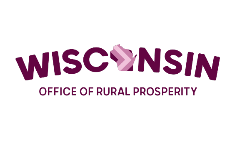
This Page Contains 4 Weeks Data - Click Here For This Week
Wisconsin Workforce Housing News

This Weeks Articles for 12/15/2025 ...
- Green Bay City Council deregulates zoning laws in largest revision in years...
- Beloit affordable housing project gets $1.16 million boost ...
- FHLBank Chicago Invests $2.5 Million to Expand Housing Counseling Across Wisconsin...
- Milwaukee officials hope new affordable housing development will help address housing crisis...
- Affordable Housing Fund to Support 400+ New Homes...
- Governor Signs Armstrong Bill Expanding Workforce Housing, Childcare Incentives...
- Council Earmarks $250,000 for Affordable Housing Project ...
Community Updates, News Stories, Best Practices, Resources, and other data supporting the development of affordable housing for the citizens of Wisconsin in every city and region in the State. Please consider partnering with us and sharing your story

Western Wisconsin Health gives land to SCV Habitat, supporting affordable housing

Western Wisconsin Health (WWH) and St. Croix Valley Habitat for Humanity (SCV Habitat) are proud to announce a meaningful partnership aimed at improving community health by expanding access to safe, stable and affordable housing.
WWH has donated a parcel of land near the original Baldwin hospital site to SCV Habitat, supporting the construction of future Habitat homes for local families in need.
The organizations are currently working closely with the Village of Baldwin to finalize property access and development details, with plans to begin building in spring 2026.
Access to stable housing plays a critical role in overall well-being. According to studies highlighted by the U.S. Centers for Disease Control and Prevention (CDC), safe and affordable housing are directly linked to improved health outcomes, reduced health disparities, and greater health equity...
...Full Story Here
Leo’s notes: Western Wisconsin Health’s land donation to St. Croix Valley Habitat for Humanity is more than a real-estate transfer — it’s a clear acknowledgment that housing is healthcare. By providing land for future Habitat homes in Baldwin, WWH is investing directly in community well-being and supporting the workforce that keeps rural health systems running. Research cited by the CDC underscores the impact: families who secure safe, affordable housing see fewer emergency visits, more primary care engagement, and better long-term health outcomes. As the median age of first-time homebuyers climbs to 40 and affordability pressures grow, partnerships like this offer a blueprint for how health systems and housing organizations can work together to build stability, resilience, and healthier communities across western Wisconsin.

Madison will be one of the country`s hottest housing markets in 2026, Redfin says

Key Points:
- The real estate company Redfin says Madison will be one of America`s hottest housing markets in 2026.
- The
Great Lakes region has wide appeal because of affordability and being a
`relatively safe haven` against climate change, the report says.
- Madison`s rapid growth is creating a housing crunch that city leaders are struggling to solve.
- Heat, wildfire smoke and flooding worsened by climate change still affect Madison.
Wisconsin`s fast-growing city will be one of America`s hottest housing markets in 2026, the real estate company Redfin predicts...
...Madison`s rapid growth makes affordable housing a chief concern
Madison`s population is expected to grow by roughly 37% in the next 25 years – ballooning from about 280,000 today, according to population estimates from the U.S. Census Bureau, to more than 385,000 in 2050.
Its unique spot on the isthmus makes it a desirable place to settle down and regularly lands it on national lists of cities that offer the best quality of life. But it also presents challenges for spreading out...
Leo’s notes: The city’s population is projected to grow 37% by 2050, yet Madison has not added housing nearly fast enough to match demand. Home values continue to climb, higher-income buyers are competing for the most affordable units. With mortgage rates expected to ease slightly and wages projected to outpace home prices next year, 2026 could offer a window to accelerate supply — but only if communities stay focused on expanding attainable, workforce-oriented housing rather than allowing demand to outstrip opportunity yet again.

Green Bay City Council deregulates zoning laws in largest revision in years

Green Bay’s zoning code was deregulated in the interest of affordable housing at the City Council’s Dec. 2 meeting in a unanimous vote.
The changes are the most substantial revisions to the city’s land use laws since 2006. The rules went through the wringer at the City Council’s prior Nov. 11 meeting, picking up tweaks along the way.
The new rules were sweeping, and generally:
- Enabled multi-family houses to be built in neighborhoods previously zoned for single-family homes.
- Allowed places like attics and garages to be turned into accessory dwelling units under certain conditions.
- Lowered minimum lot sizes.
- Reduced restrictions on dividing property.
- Allowed small businesses, like laundromats, in residential neighborhoods, under certain conditions.
- Green Bay`s City Council unanimously approved deregulated zoning laws to address the city`s affordable housing crisis.
- The new rules allow for multi-family homes in single-family zones and accessory dwelling units like converted garages.
- The changes represent the most significant revision to the city`s land use laws since 2006.
Leo’s notes: Green Bay’s decision to modernize its zoning code is a meaningful signal that housing affordability is being treated as a citywide priority, not a niche issue. By legalizing more housing types in more neighborhoods—while still retaining targeted safeguards for sustainability, downtown vitality, and public oversight—the city is acknowledging a simple reality: today’s housing shortage can’t be solved with yesterday’s rules. Zoning reform alone won’t fix affordability, but it removes a major barrier, giving builders, homeowners, and small businesses the flexibility needed to add homes incrementally and responsibly across the community.

How a Madison community land trust provides affordable housing
 As Madison leaders and developers seek to build the city’s stock of affordable housing, one nonprofit has sought to keep land affordable for community uses like housing and urban agriculture since 1991.
As Madison leaders and developers seek to build the city’s stock of affordable housing, one nonprofit has sought to keep land affordable for community uses like housing and urban agriculture since 1991.The Madison Area Community Land Trust plans to add affordable housing through several projects in the next few years, including 12 townhomes on the Voit Farms property on Madison’s east side. Those projects are meant to build on more than five dozen homes already in the trust, which are kept affordable through a unique model.
This month marked a transition for the organization, with Mason Cavell taking over from Olivia Williams as the trust’s new executive director. The outgoing and incoming leaders recently sat down with the Cap Times to discuss the area’s housing needs and the nonprofit’s goals, and to answer the question: What is a land trust anyway?... ...Full Story Here
Leo’s notes: Through a model that separates land ownership from the home itself, MACLT ensures that every public dollar invested in affordability stays in the community forever — keeping homes attainable for families earning $50,000–$80,000. With new leadership in place and projects underway at Voit Farms and beyond, the land trust is expanding missing-middle options, supporting first-time buyers, and reducing displacement pressures by freezing land costs for future generations. In a moment when stability is increasingly out of reach, community land trusts offer one of the most durable pathways to affordable home ownership and long-term neighborhood resilience.
Ken Notes: It is the land and land owner the controls the development. Working with communities, Land Trusts could solve much of the workforce housing issues in the State by developing small clusters of homes, nice small well built architecture, great amenities and public space.

FHLBank Chicago Invests $2.5 Million to Expand Housing Counseling Across Wisconsin
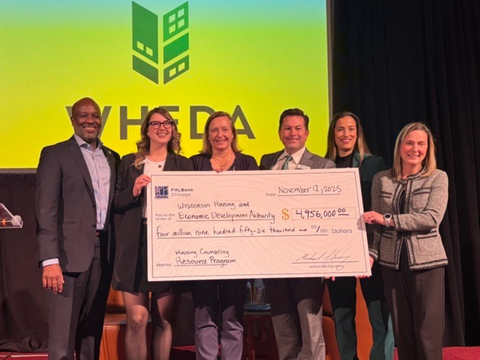
Community First® Housing Counseling Resource Program partners with WHEDA to enhance statewide housing counseling availability
CHICAGO--(BUSINESS WIRE)--The Federal Home Loan Bank of Chicago (FHLBank Chicago) has awarded $2.5 million to the Wisconsin Housing and Economic Development Authority (WHEDA) for 2025 through its Community First® Housing Counseling Resource Program. The increased funding compared to last year allows WHEDA to expand its network of U.S. Department of Housing and Urban Development (HUD)-certified counseling agencies, helping more Wisconsin families prepare for sustainable homeownership.
“Together with WHEDA, we’re expanding pathways to successful and sustainable homeownership across Wisconsin,” said Katie Naftzger, Senior Vice President and Community Investment Officer at FHLBank Chicago. “Housing counseling provides families with the knowledge and confidence to make informed decisions and create stability that lasts.”...
...Full Story Here
Ken Notes:We have a newsletter that could use a grant, and while we preach to the choir -- it is a BIG choir...

Beloit affordable housing project gets $1.16 million boost
 ROCKFORD, Ill. (WTVO) — The Beloit City Council has approved a $1.16 million contribution to push forward an affordable housing project, paving the way for a new apartment complex.
ROCKFORD, Ill. (WTVO) — The Beloit City Council has approved a $1.16 million contribution to push forward an affordable housing project, paving the way for a new apartment complex.The Riverside Housing Project, which aims to deliver 55 low-income units, had faced a funding gap after failing to secure multiple financing grants. The recent contribution is seen as a major step forward for the project.
...Full Story Here
Leo’s notes: Beloit’s decision to commit $1.16 million in TIF funds to keep the Riverside Housing Project moving is another reminder that affordable housing does not happen without public leadership. When gaps emerge—as they often do in workforce and low-income housing—local governments that step in help turn stalled plans into real homes for real people. With 55 units back on track, Beloit is reinforcing a simple truth playing out across Wisconsin: investing in housing is investing in economic stability, workforce retention, and the long-term health of the community.

Public Museum Would Be Demolished For Major Development
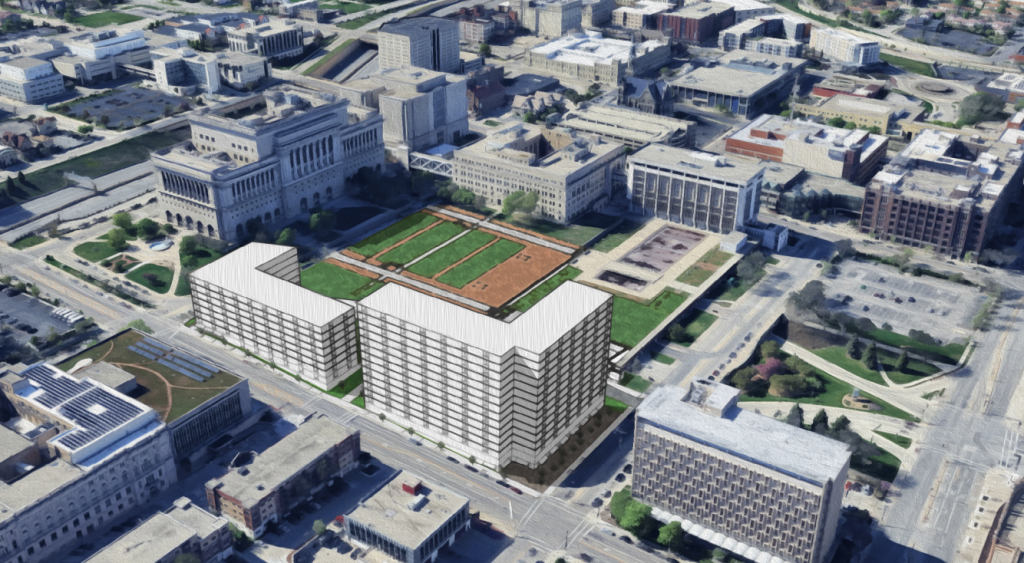
The Milwaukee Public Museum (MPM) building could be demolished and replaced with a mixed-use residential development.
MPM Inc., the non-profit that runs the museum, is building a new facility at 1310 N. 6th St. MPM will close the existing museum at 800 W. Wells St. and open the Nature and Culture Museum of Wisconsin in 2027.
The building on W. Wells Street is owned by Milwaukee County, which hired consultants in 2024 to plan for the future of the empty building. The consultants GRAEF, Bear Real Estate Group and CG Schmidt are recommending the county demolish the building and market the site for mixed-use redevelopment, according to a report from the county’s Economic Development Division...
Leo’s notes: Milwaukee’s soon-to-be-vacant Public Museum site could become one of the most consequential housing opportunities in the region. With museum operations moving to the new Nature and Culture Museum of Wisconsin in 2027, consultants are recommending the county demolish the aging, structurally failing Wells Street complex and open the 3.7-acre site to high-density, mixed-use residential development. Early concepts show the potential for up to 555 new homes, including market-rate, workforce, affordable, and student housing — a transformative scale at a moment when Milwaukee’s housing shortage continues to deepen. As Milwaukee County prepares to issue an RFP in mid-2026, this project represents exactly the kind of site where bold housing investments can reshape opportunity for the next generation.

Milwaukee officials hope new affordable housing development will help address housing crisis
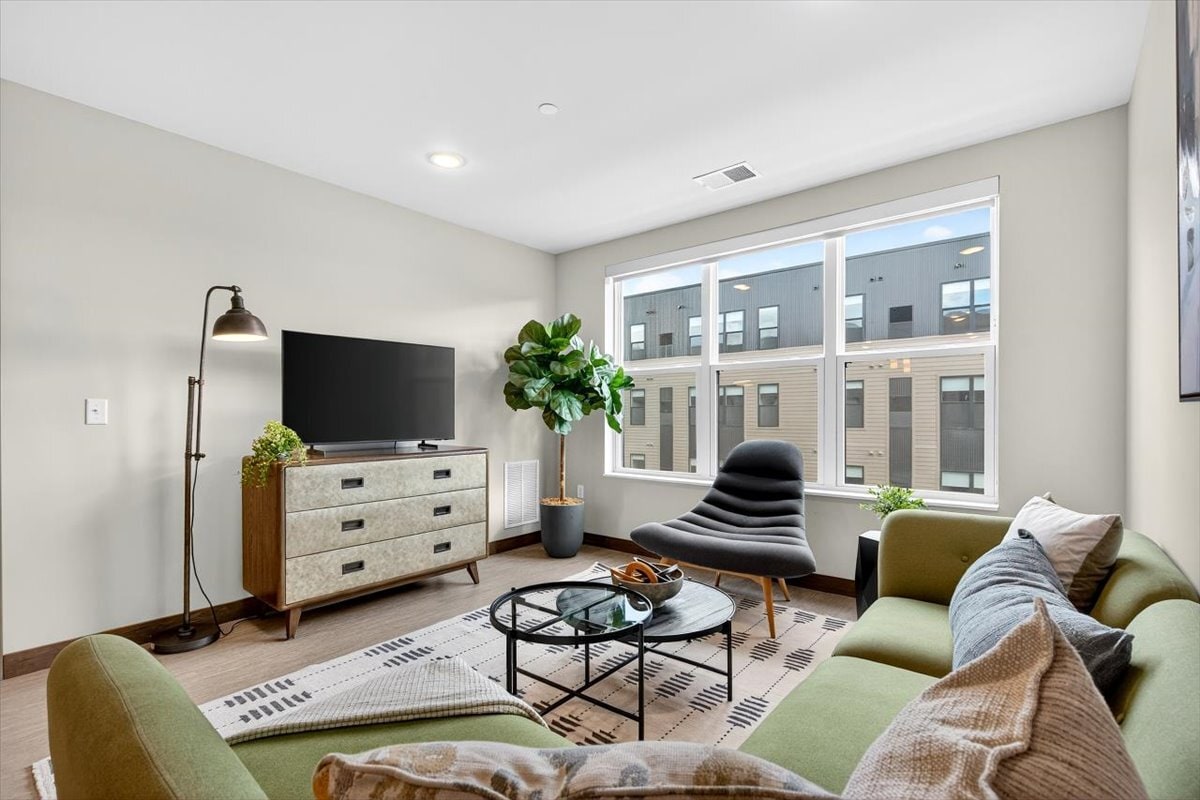
The Corliss is a new private affordable housing development in Milwaukee’s Bay View neighborhood.
The development cost nearly $200 million, including some public funding, and offers over 500 affordable rental units. It consists of eight buildings at the site of a former landfill at 135 E. Becher Street.
Milwaukee`s District 14 Alderwoman Marina Dimitrijevic represents the area where The Corliss is located. She spoke with WUWM’s Eddie Morales about how the project could help address housing challenges.
Eddie Morales: The project aims to address problems like resident displacement, rising costs, and keeping aging residents in place. Can you explain the scale of those concerns and how much of an impact that city officials hope The Corliss will have?
Marina Dimitrijevic: Just like many cities across the United States, affordable housing is still something we`re really struggling with. We, as the City of Milwaukee, are thousands of units under what we need for a city our size when it comes to affordability. It`s one of the top things I hear, especially in my community.
This is a way to chip away at what is a very large-scale problem. And speaking of scale, this is a pretty large-scale project. It`s just under 600 units and every unit is affordable, meaning that it`ll be somewhat income-based. There is specifically over 100 units dedicated for older adults who want to age in place. So this is quite the right step in the right direction on what I do think will be a long worthwhile journey to making our city more affordable and accessible for everybody....
...Full Story Here
Leo’s notes: The Corliss are not one-off solutions. If communities want teachers, service workers, seniors, and families to stay rooted where they live and work, affordable and workforce housing must become a sustained priority, not an exception.

Grants awarded to 159 organizations across Iowa and Wisconsin
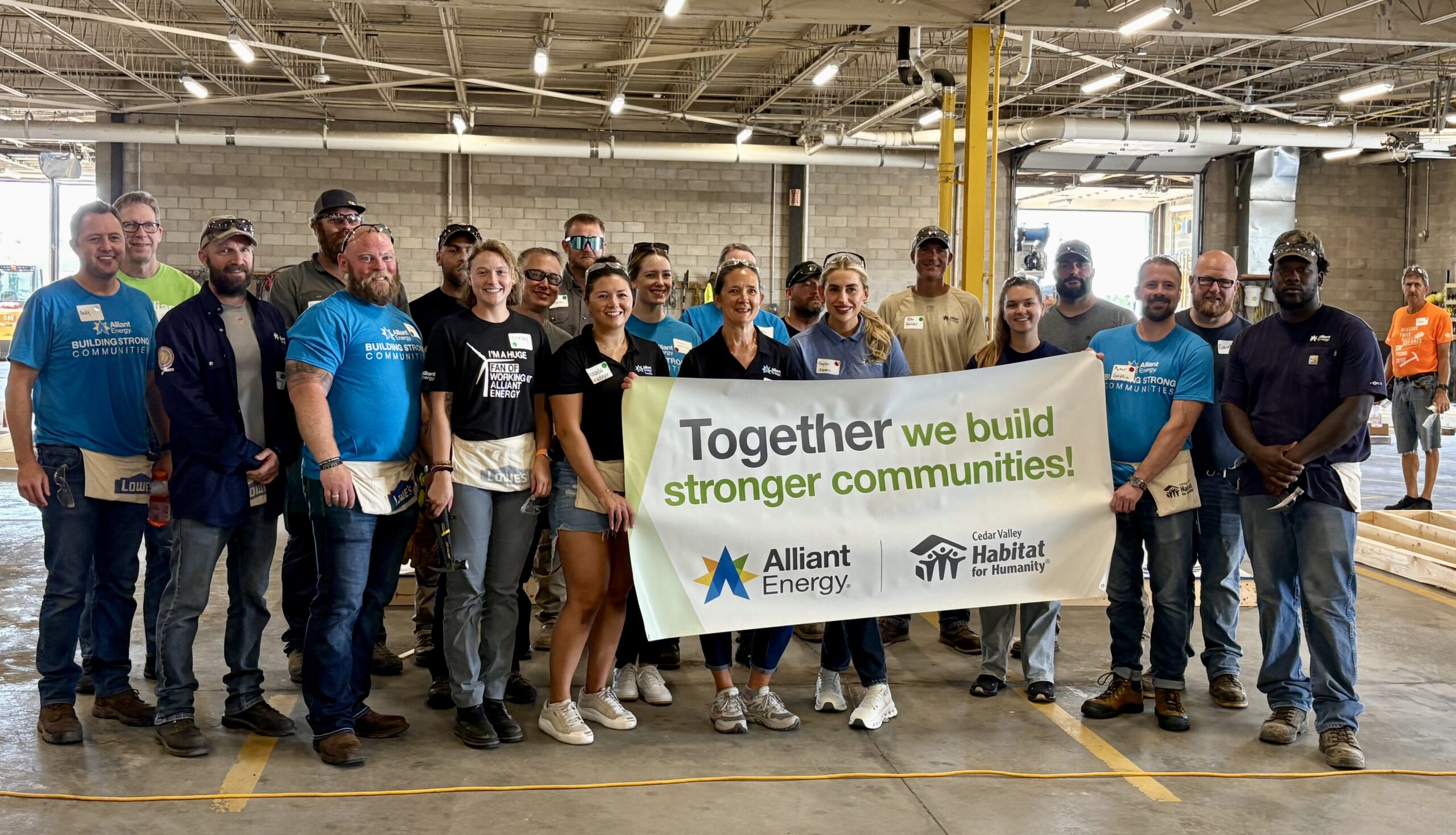
In its third and last Community Grant cycle of the year, Alliant Energy and the Alliant Energy Foundation awarded over $980,000 to various causes and nonprofits across Iowa and Wisconsin. This brings the 2025 total Alliant Energy has awarded to over $2.28M.
All Community Grant recipients seek to make an impact on Alliant Energy’s four focus areas: Community safety and engagement, environmental stewardship, hunger and housing and workforce readiness...
...Full Story Here
Leo’s notes: As housing costs continue to climb across the region, philanthropic partners like Alliant Energy play an increasingly important role — not as a replacement for policy action, but as a catalyst that strengthens local safety nets and helps communities move closer to stable, attainable housing for all.

With offer of ‘zero rent,’ tiny home villages extend housing – and hope – for homeless veterans
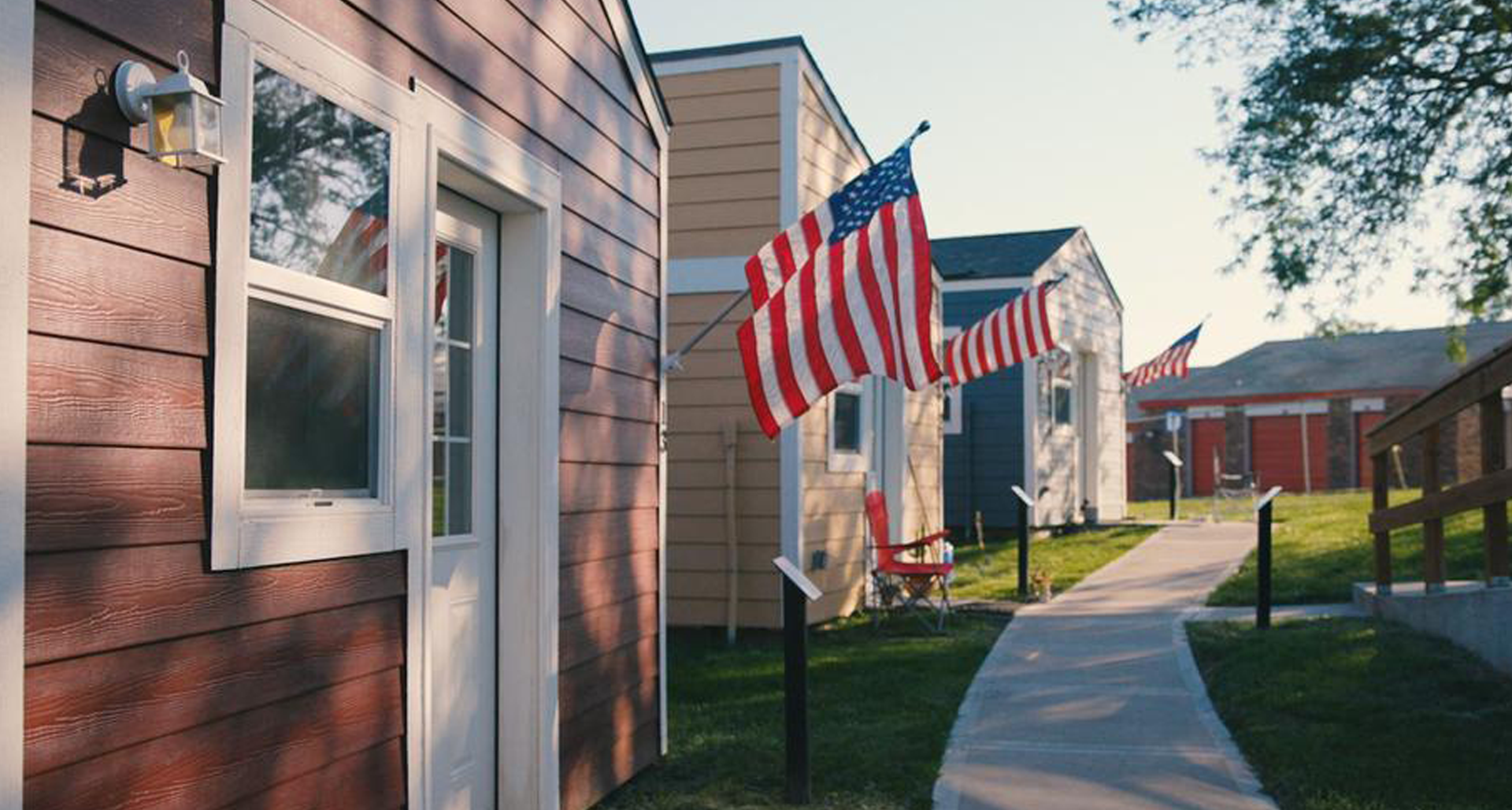
Veterans Community Project provides temporary housing in 240-square-foot homes for veterans who stay an average of 335 days to address problems and implement a plan for independent living.
After struggling with addiction and homelessness, Iraq War veteran Kyle Hanssen said a nonprofit organization’s offer of free housing at a tiny homes village seemed too good to pass up
But Hanssen, a former lance corporal in the Marine Corps, first had to commit to a rehabilitation program that consisted of mental-health counseling, job training and weekly drug tests.
With a focus on accountability, the Veterans Community Project — which is expanding nationwide — provides temporary housing in 240-square-foot homes for veterans who stay an average of 335 days to address problems and implement a plan for independent living.
“While living in a tiny home in our village, veterans pay zero in rent. We only ask that they put in the work investing in their future by working our case management program,” said Bryan Meyer, chief executive officer and a veteran co-founder of Veterans Community Project...
...Full Story Here
Ken Notes: While our focus is workforce housing, solving the homeless issue should begin with Veterans. Imagine an amendment to the GI bill that states that GI`s will be able to find affordable housing in the US. Wisconsin has some working examples of these "villages".

City council to shift $3 million housing incentive
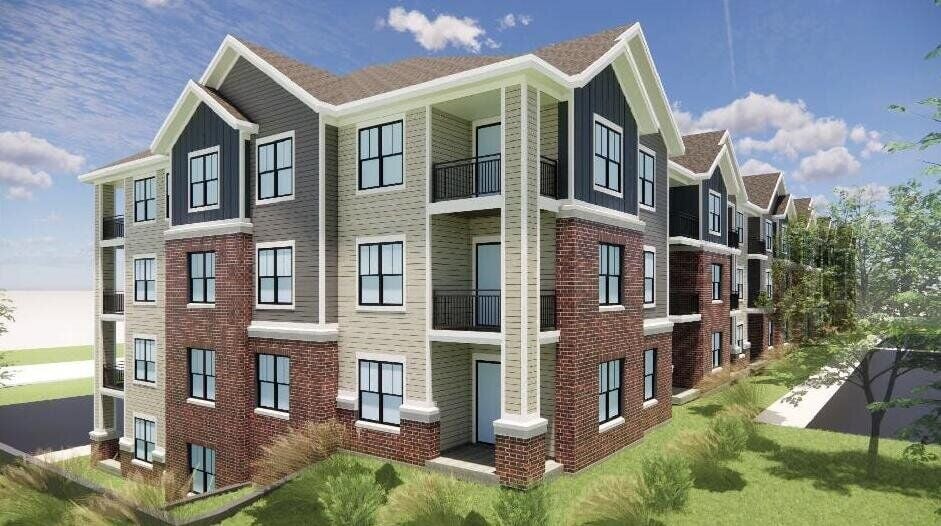
BELOIT — The Beloit City Council on Tuesday is going to discuss whether to give some or all of a $3 million affordable home building incentive to a Madison-based company that already is getting $3 million from the city.
In 2024, the Beloit City Council awarded $3 million each to two housing developers to build affordable housing complexes in the city. The money came from expiring tax increment financing districts and were one-time incentive payments meant to boost home and apartment building in the city.
One of those two projects was canceled when the developers, The Alexander Co., which hoped to build seven multi-family buildings with a total of 94 units off Gateway Boulevard east of Interstate 90, did not receive housing tax credits from the state. Housing tax credits help low-income and moderate-income housing developers finance projects because they are able to sell the credits to other developers to raise capital....
...Full Story Here

Wisconsin Workforce Housing Resources
 ...Full Story Here
...Full Story Here
Imperial Garden to remain after property owner scraps apartment plans

Middleton’s plan commission recommended against rezoning the property
Tom Sanford, who assisted property owner Henry Chen in his proposed redevelopment plans, tells Isthmus that Chen “has decided not to redevelop the property at this time.” Sanford says Chen was “disappointed” that Middleton’s plan commission on Nov. 11 recommended the city council deny rezoning the property to allow for a 10-story, 195-unit apartment building.
“So, nothing will change and the Imperial Garden Restaurant will continue serving excellent Chinese food as usual,” Sanford says.
The project initially called for the razing of Imperial Garden and the adjacent Garden Asian Market, both tenants of Chen’s, to make room for the new development...
Notes:

Developer plans 40 rental homes in Amani area if it can obtain tax credits
 A developer plans to build 40 rental houses in Milwaukee`s Amani neighborhood ? if the firm can obtain federal affordable housing tax credits.
A developer plans to build 40 rental houses in Milwaukee`s Amani neighborhood ? if the firm can obtain federal affordable housing tax credits.Leo’s notes: Milwaukee is taking another meaningful step toward rebuilding housing stability in long-disinvested neighborhoods, granting Emem Group exclusive negotiating rights on 40 city-owned parcels in Amani for a proposed affordable rental development. If awarded federal low-income housing tax credits this spring, the project would bring new homes to an area that has seen decades of vacancy and disinvestment — with long-term affordability requirements built in. At the same time, the city is launching a pilot to spur “missing middle” homeownership by providing lots and subsidies for replicable duplex, townhome, and small-scale infill designs.

Site of St. Nicholas Church cleared for 4 Habitat for Humanity homes

RACINE, WI — The former St. Nicholas Episcopal Church property at 2509 16th Street has been cleared for redevelopment, with construction of four affordable homes set to begin in 2026.
According to City Housing Manager Veronica Seymour, the City of Racine is partnering with Habitat for Humanity to build the new homes...
...The church, owned by the Episcopal Diocese of Milwaukee, had been vacant for several years and was in poor condition, prompting the city’s Community Development Authority (CDA) to consider its acquisition and redevelopment...
...Full Story Here
Leo’s notes: Racine’s plan to replace the long-vacant St. Nicholas Episcopal Church with four new Habitat for Humanity homes is a small but meaningful step toward addressing the city’s estimated 3,500-unit housing shortfall. By leveraging federal HOME funds and partnering with Habitat, the city is turning an underused property into quality, ownership-ready housing that fits the neighborhood and serves income-eligible families. It’s another example of how thoughtful infill development — even at a modest scale — can strengthen communities, stabilize blocks, and expand opportunities for families priced out of the market.

Affordable Housing Fund to Support 400+ New Homes
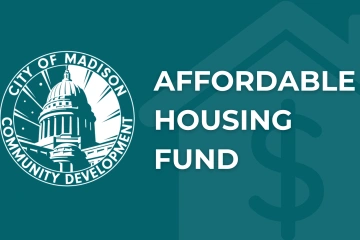 The City of Madison’s Common Council has approved nearly $14 million from the Affordable Housing Fund to support the creation of approximately 425 new rental homes across the City, with more than 260 of those offering permanent affordability to lower-income households.
The City of Madison’s Common Council has approved nearly $14 million from the Affordable Housing Fund to support the creation of approximately 425 new rental homes across the City, with more than 260 of those offering permanent affordability to lower-income households. This funding is the result of the Community Development Division’s annual Request for Proposals (RFP) for Affordable Rental Housing Developments, supporting development proposals that utilize federal low-income housing tax credits.
United Residences Senior Apartments
Yellowstone Senior Apartments
Ridgeway Senior Apartments
Fair Oaks Apartments
...Full Story Here

On campus housing being built for Neenah ThedaCare medical residents

NEENAH, Wis. (WBAY) - Froedtert ThedaCare is investing in the future of healthcare in Northeast Wisconsin. The health system is building new on-campus housing for medical residents at ThedaCare Medical Center-Neenah.
Approximately 56 townhouse units will be constructed in two phases on Doty Island. This housing will support ThedaCare’s graduate medical education program, which was accredited in September.
The program aims to train and retain physicians, addressing Wisconsin’s need for thousands more doctors by 2035...
...Full Story Here
Ken Notes: This is an idea that could be used in a number of businesses. Housing and Skilled labor are two of the biggest concerns today...

Partnership brings two new affordable homes to Sister Bay

The homes, whose owners are expected to move in by the end of 2025, are the second and third completed in Sister Bay by the Door County Housing Partnership, which also built five in Sturgeon Bay.
Two families are set to move into the homes on Ava Hope Trail by the end of 2025. The homes are the seventh and eighth completed by the housing partnership and the second and third in Sister Bay, with the other five in Sturgeon Bay...
...Full Story Here
Leo’s notes: These are the seventh and eighth homes completed by the Door County Housing Partnership — and part of what could become a 10-home affordable subdivision in Sister Bay. Using the community land trust model, the partnership keeps homes permanently affordable by retaining ownership of the land and selling the homes at below-market prices, supported by grants and donor subsidies. Families build equity responsibly while ensuring the homes remain attainable for future income-eligible buyers. With demand rising, a dollar-for-dollar match campaign is now underway to help build two more homes in 2026 — a clear reminder that sustained community investment is essential to expanding the region’s long-term affordable housing supply.

Governor Signs Armstrong Bill Expanding Workforce Housing, Childcare Incentives

Act 78 clarifies and broadens tax credit eligibility, giving Wisconsin businesses more flexibility to invest in housing and childcare needs
MADISON, WI – Governor Tony Evers has signed a proposal introduced by State Rep. Dave Armstrong (R-Rice Lake) that will improve an incentive to Wisconsin businesses to invest in workforce housing and childcare.
Assembly Bill 280, which is now Act 78, builds on legislation Representative Armstrong successfully shepherded to the Governor’s desk last session.
“Wisconsin is in desperate need of affordable housing and childcare, both of which are critical to our economy,” Representative Armstrong said.
...Full Story Here“People don’t want to work where they can’t afford to live and there’s no one to watch the kids. Last session, I introduced what became 2023 Act 143, which created an incentive for businesses to get some skin in the game by allowing them to claim the Business Development Tax Credit for up to 15% of their investments in workforce housing and childcare. However, after Act 143 took effect, I began to hear concerns from employers that the Wisconsin Economic Development Corporation was interpreting it more narrowly than I had intended, limiting the types of investments that could qualify.”
Leo’s notes: By clarifying that businesses can receive tax credits for contributing to housing and childcare projects that benefit the broader community (including revolving loan funds), the state is expanding the toolbox without creating new bureaucracy. In a tight labor market where workers need places to live and families need reliable care, this flexibility helps align economic development with real-world workforce needs and reinforces housing as essential infrastructure, not a side issue.

Boomers could help fix Wisconsin`s housing market
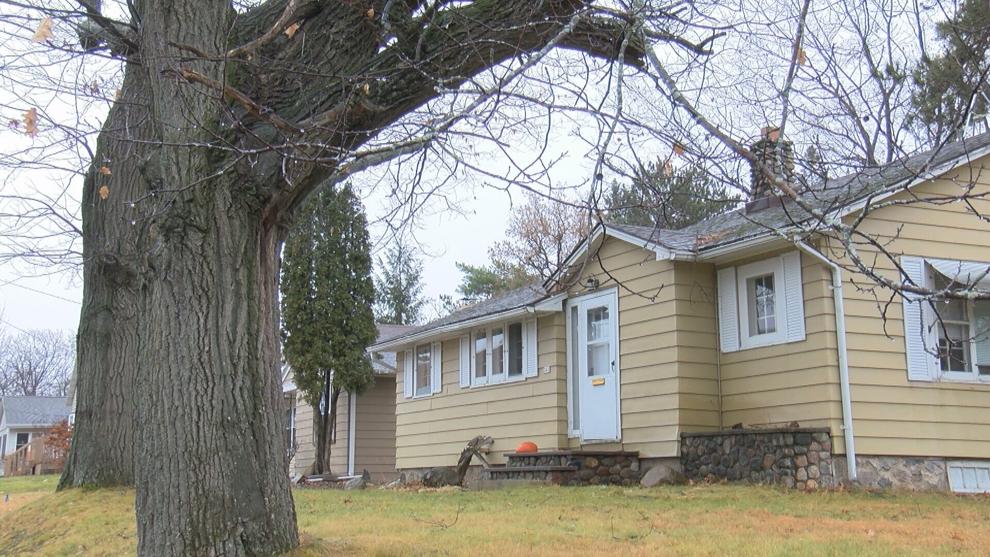
RHINELANDER (WJFW) — While prices haven’t started falling and it’s still considered a seller’s market, the supply of houses is slowly growing as the Baby Boomer generation gets older.
David Clark, economics professor emeritus of Marquette University and economics consultant for the Wisconsin Relators Association, acknowledges the struggles of current home buyers.
“The real challenge is not on the demand side. There’s plenty of demand for housing but the real challenge is on the supply side,” he said. “There are simply more people who want to buy homes than there are homes for them to purchase.”...
...Full Story Here
Ken Notes: For boomers to vacate the nice affordable homes they live in now, there will have to be nicer homes and communities to move into. We can do this but we need to plan and design neighborhoods that are attractive to those willing to move. Florida and Arizona Have been doing this for decades...

New housing development planned for Rhinelander amid Northwoods housing crisis

RHINELANDER (WJFW) -- Oneida County has faced a housing crisis in recent years, but a new planned development in Rhinelander will bring more living spaces to the area.
Just along highway 17 across from the Rhinelander Menards is an expected location of new apartment and townhome housing, thanks to Shorewest Realty and The Oneida County Economic Development corporation.
The Northwoods housing crisis has been a problem in the area for the last two decades. Businesses are having trouble finding employees as options for living spaces have been limited. Shorewest real estate agent Deb Mann explains the process for how this came to be...
...Full Story Here

Council Earmarks $250,000 for Affordable Housing Project

An expansion of affordable housing took a step forward on Dec. 2 when the Sturgeon Bay Common Council agreed to commit $250,000 toward a proposed 60-unit apartment development on the city’s west side.
The funding, drawn from the city’s affordable housing reserve, would support Gorman and Company’s project, Columbia Corner Apartments, contingent on the project securing low-income housing tax credits (LIHTC) from the Wisconsin Housing and Economic Development Authority (WHEDA).
The council approved a city Finance/Purchasing and Building Committee recommendation to allocate $250,000 in affordable housing funds for the project, which would be located northeast of the intersection of South Columbia Avenue and Green Bay Road.
Ted Matkom, the lead developer for the project, appeared remotely before the council about Gorman’s plans for the site, where the company has an option to purchase through Dec. 31, 2026...
...Full Story Here
Leo`s notes: Sturgeon Bay’s decision to commit affordable housing funds to the proposed Columbia Corner Apartments underscores a growing recognition that workforce housing is essential community infrastructure, not a secondary amenity. This investment reflects foresight: aligning land use, financing tools, and state programs to turn a challenging site into homes that support the people who keep the community running.

Wisconsin grapples with prospect of losing federal housing funds

HUD cuts could endanger housing for families, veterans, children
A proposed budget from the U.S. Department of Housing and Urban Development (HUD) that cuts funds which have meant the difference between shelter and homelessness for about 170,000 people nationwide has left communities scrambling. In Wisconsin, the cuts are projected to cause the loss of permanent housing for 2,379 people according to a report by the National Alliance to End Homelessness. The loss of funds would hit early in the new year, leaving local governments to absorb the fallout in the middle of winter.Korey Lundin, senior staff attorney at the National Housing Law Project and former staff attorney with Legal Action of Wisconsin, told the Wisconsin Examiner that the grants that HUD cut — known as Continuum of Care (CoC) funds — “help thousands of people. That includes folks who have been recently unhoused.” In Wisconsin, 52% of permanent housing funding is covered by the CoC program...
...Full Story Here

About Wisconsin Workforce Housing News (WWHNews.com)
 Across Wisconsin many employees can simply not afford to live where they work.
Across Wisconsin many employees can simply not afford to live where they work. This is true in big cities and small rural communities. Both the availability and price of housing is not in line with the needs of those working in jobs that are vital to the success of our communities. Imagine a firefighter, teacher, city employee, service, or retail worker not able to afford a home in the community they serve.

List of Housing Resources

WRA Wisconsin Housing Statistics (Thanks Jon!)
State of Wisconsin Department of Administration Neighborhood Investment Fund (NIF) Program
ENABLING BETTER PLACES: A USER’S GUIDE TO WISCONSIN NEIGHBORHOOD AFFORDABILITY
WHEDA’s Rural Affordable Workforce Housing Initiative
Wisconsin REALTORS® Association
WISCAP Affordable Housing Network
Division of Energy, Housing and Community Resources
Housing Authority City of Milwaukee (HACM)
Wisconsin Housing Preservation Corp
WEDA Legislative Tracker
NRA Housing Needs By State / Wisconsin
DANE WORKFORCE HOUSING FUND
Dane County Regional Housing Strategy (RHS)
A Housing Hurdle: Demographics Drive Need for More Homes
Wisconsin Homeowners Alliance
WRA’s “Falling Behind” report
Social Development Commission - Pathway to success
COMMUNITY DEVELOPMENT ALLIANCE
Middleton Workforce Housing Committe
Milwaukee’s Collective Affordable Housing Strategic Plan
Workforce Housing Initiative For Wisconsin
2020 Symposia Series on Workforce Housing
Wisconsin Homeowners Alliance.org/resources/
City of Milwaukee Affordability Report
WHEDA Qualified Allocation Plan
10-Year Plan to End Homelessness
City of Milwaukee Consolidated Plan
Wisconsin Consolidated Plan
SEWRPC Regional Housing Plan
Wisconsin Policy Forum Reports
Blueprint for a Renters Bill of Rights
White House Fact Sheet on Rental Affordability
Community Economic Development / Division of Extension
Oshkosh Kids Foundation Tiny House Village



 Wisconsin REALTORS® Association
Wisconsin REALTORS® Association






